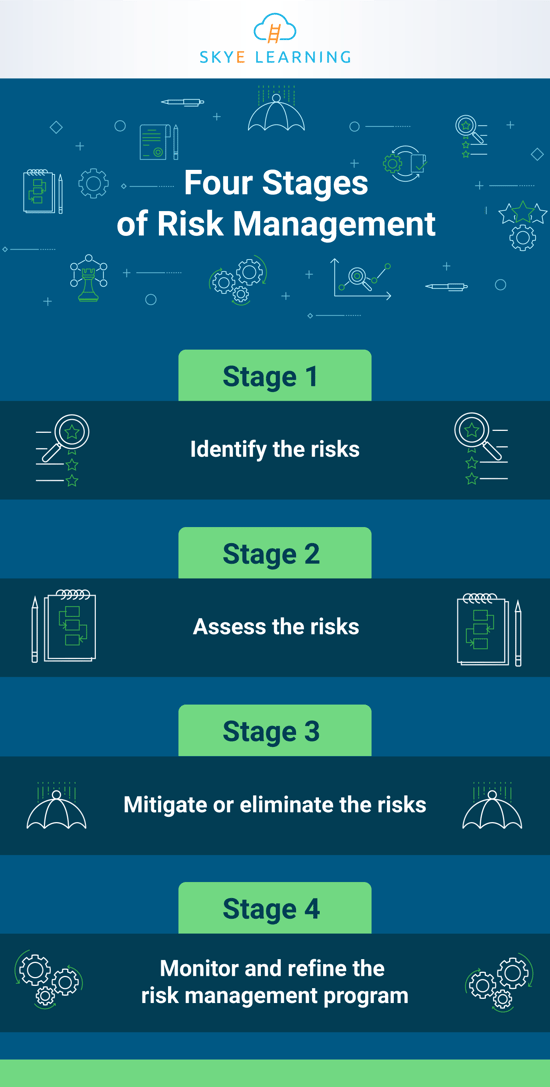Risk management consists of four essential stages which, taken together, constitute a systematic process for dealing with the broad array of risks that an organization may face.
Stage 1: Identify the risks. The first step in managing risk is to determine what those risks are.
Stage 2: Assess the risks. Not all risks are equal. For the average company, the risk of having an employee injured in a workplace accident is higher than, for instance, the risk that a meteor will destroy its factory.
Stage 3: Mitigate or eliminate the risks. Once a company has determined which risks need to be addressed—either because it faces legal requirements or because it deems the potential cost of a particular risk to be too high—it must develop and implement strategies to deal with those risks.
Stage 4: Monitor and refine the risk management program. Even the best-laid safety plans cannot eliminate all risk; to quote the old saying, "Accidents will happen." The challenge for HR professionals is to monitor the effectiveness of the risk management program on an ongoing basis and to modify it as needed.







